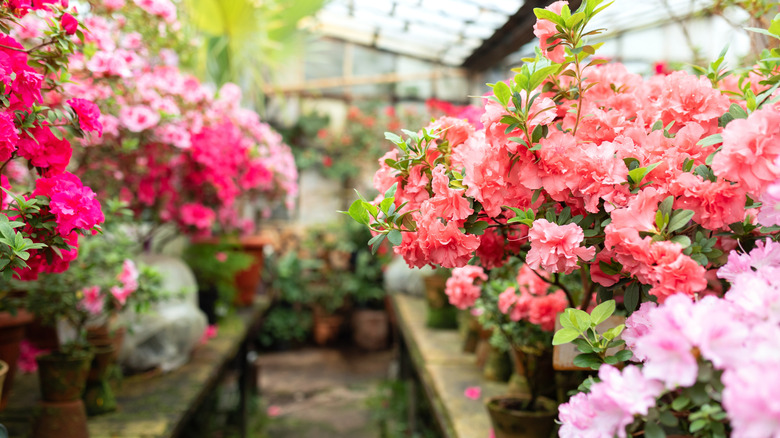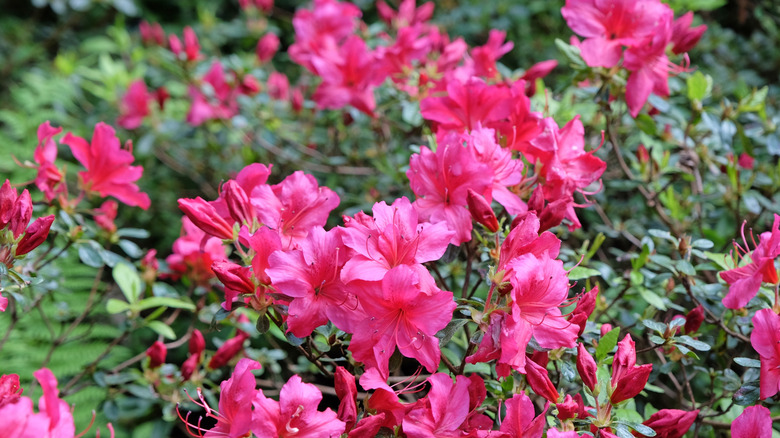The Winter Hardy Variety Of Azalea That Will Bring Color To Your Spring Garden
There are a few precious weeks in late springtime when azalea (Rhododendron) bushes open their vibrant blooms to cheerfully welcome the season. The beloved flower is renowned for its radiant petals, honeyed fragrance, and rich cultural history. Over the years, azaleas have grown in popularity thanks to their unfussy, low-maintenance nature. But if you live in an area of the U.S that's prone to cold fronts or unexpected freezes, some varieties of azaleas are better equipped than others to withstand the sudden drop in temperature.
The 'Northern Lights' variety of azaleas were first introduced in 1978 by botanists at the University of Minnesota, who spent decades breeding hardy varieties able to withstand harsh climates. At first glance, the intricate pink petals and lush foliage of 'Northern Lights' azalea's don't appear that different from other types of azaleas you can grow in your garden. However, this winter hardy variety can tolerate temperatures as low as -45 degrees Fahrenheit, making the 'Northern Lights' variety a perfect match for avid gardeners in colder climates seeking a flowering perennials that can withstand frigid winters.
While most azalea bushes do best in USDA hardiness zones 7-9, 'Northern Lights' can thrive in climates as cold as zone 3. This variety of deciduous shrub performs best between zones 3-7. While 'Northern Lights' are not particularly heat tolerant, they're unfussy, and relatively easy to grow, like other azaleas. Knowing how to grow and care for your 'Northern Lights' azaleas can lead to bountiful blooms that will return to illuminate your garden year after year.
Growing and caring for Northern Lights azaleas
Caring for 'Northern Lights' azaleas is not too different from caring for other, more common, azalea varieties. For newer shrubs, it's best to plant them early on in the spring or fall season so they have more time to establish before temperatures get too harsh. 'Northern Lights' favor nutrient-dense, acidic soil, mixed with compost or organic matter. They can also benefit from additional fertilizing twice yearly.
It's important to plant your 'Northern Lights' in soil with adequate drainage. While this variety is considered relatively drought tolerant, the shrub's shallow root system requires consistent water. 'Northern Lights' can tolerate anywhere from full sun to partial shade, but should be planted in a location where they can receive between four and six hours of sunlight per day. While the variety can withstand winter's sharp drops in temperature, it is not immune to other types of elemental stress like wind damage. Azalea's delicate flowers are vulnerable to powerful gusts, and should be covered on windy days, or planted in a protected location.
The best time of year to prune azaleas for stunning blooms is shortly after they blossom in the spring. This will give them more time to grow back before their late summer flowers bloom. Plus, pruning a healthy azalea can help motivate your shrub to grow back hardier, and stimulate new flower production in upcoming seasons. With consistent care, your 'Northern Lights' azalea bush can weather harsh winters, and greet you with fresh blossoms once the frost melts away.

